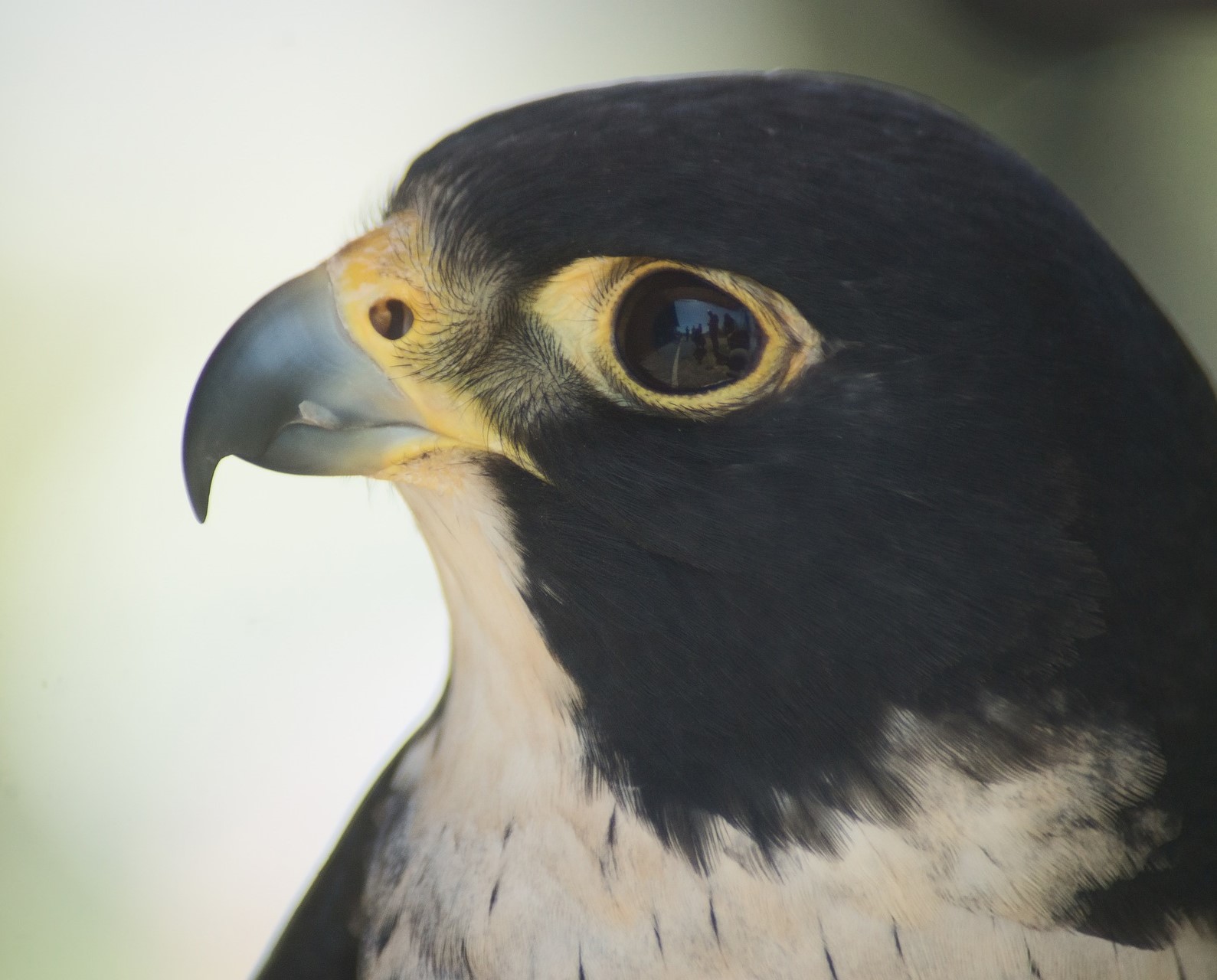From desert to tundra and the city streets of New York to Sydney, falcons are a highly specialized bird of prey with over 66 different species and an exceptional ability to adapt to changing habitats.
Dive in to learn more about our fantastic falcon species of Florida, or Register for our Wild Sarasota webinar on Falcons for a more in depth look.
Tactile Falcons

Each falcon is unique in their own way, but all members of the Family Falconidae share certain characteristics that enable falcons to soar the skies as top predators in the avian world.
- Falcons have strong, hooked shaped bills used to attack their prey.
- On their feet are long, sharp, and curved talons to quickly snatch their prey… which very well may be another bird flying through the sky.
- Falcons have telescopic eyesight, with vision up to eight times better than humans this family of birds can spot prey from miles away.
- Long, narrow, and pointed wings that are built for maneuvering through tight spots.

Size
Falcons range from small to medium-sized raptors. Females are typically larger than males.
The largest falcon in North America is the the Gyrfalcon (Falco rusticolus), a fierce predator of the Arctic. Females reach the size of a Red-tailed Hawk and breed so far north in Canada and Alaska that it is rare to see this unique bird.
The smallest falcon of North America is the American Kestrel (Falco sparverius), only the size of a Mourning Dove. Small but mighty, this bird of prey is as well equipped as the rest. It’s days are spent hunting for insects and invertebrates.

Speed
Falcons are extremely fast and agile, but when it comes to speed, one falcon stands out from the rest. Reaching speeds as high as 240 miles per hour while performing an incredible steep dive to capture its prey from mid-air, the Peregrine Falcon (Falco peregrinus) is considered the fast animal in the world.
Feeding
Falcons are not picky eaters, far from it in fact. Their diet commonly includes insects, birds, mammals, amphibians, reptiles, and carrion. It is this widespread

diet that has contributed to their success adapting to different habitats across the globe.
One falcon in particular, the Peregrine Falcon, has been documented to have consumed 450 different species of birds ranging from hummingbirds to some as large as sandhill cranes. Although this diet has been helpful in their success as a species, it almost led to their demise.
In the mid 20th century, DDT was a commonly used pesticide and was sprayed across North America. Falcons and hawks may not have been consuming DDT directly, but the amount they consumed through their prey nearly led to the extinction of the Peregrine Falcon.
Fortunately, through the ban on DDT and excellent conservation efforts, the Peregrine Falcon was removed from the U.S. endangered species list in 1999.
Nesting

Possibly too preoccupied spending their days hunting for prey, falcons do not build their own nest. Instead, they will lay their eggs in the abandoned nest of another bird, a small depression, a hollowed tree branch, ledges of buildings and cliffs, or simply nest in the soil.
Of course, this is true for all but the Crested Caracara (Caracara plancus). The only falcon to build its own nest. This isn’t the only factor separating the Crested Caracara from other falcons, this raptor has the appearance of a hawk, and similar behavioral patterns to that of a vulture. This raptor will feed on nearly anything it finds, including sharing meals of carrion with other vultures, and is often seen on the ground or sitting on fence posts near fields and agricultural areas.
To Learn More About Our Fantastic Falcons:
- Register for our Wild Sarasota webinar: Falcons of Florida
- Learn more about Florida’s Wildlife
- Learn how to identify different falcons at The Cornell Lab All About Birds
Read all our Wild Sarasota blogs HERE
 0
0
